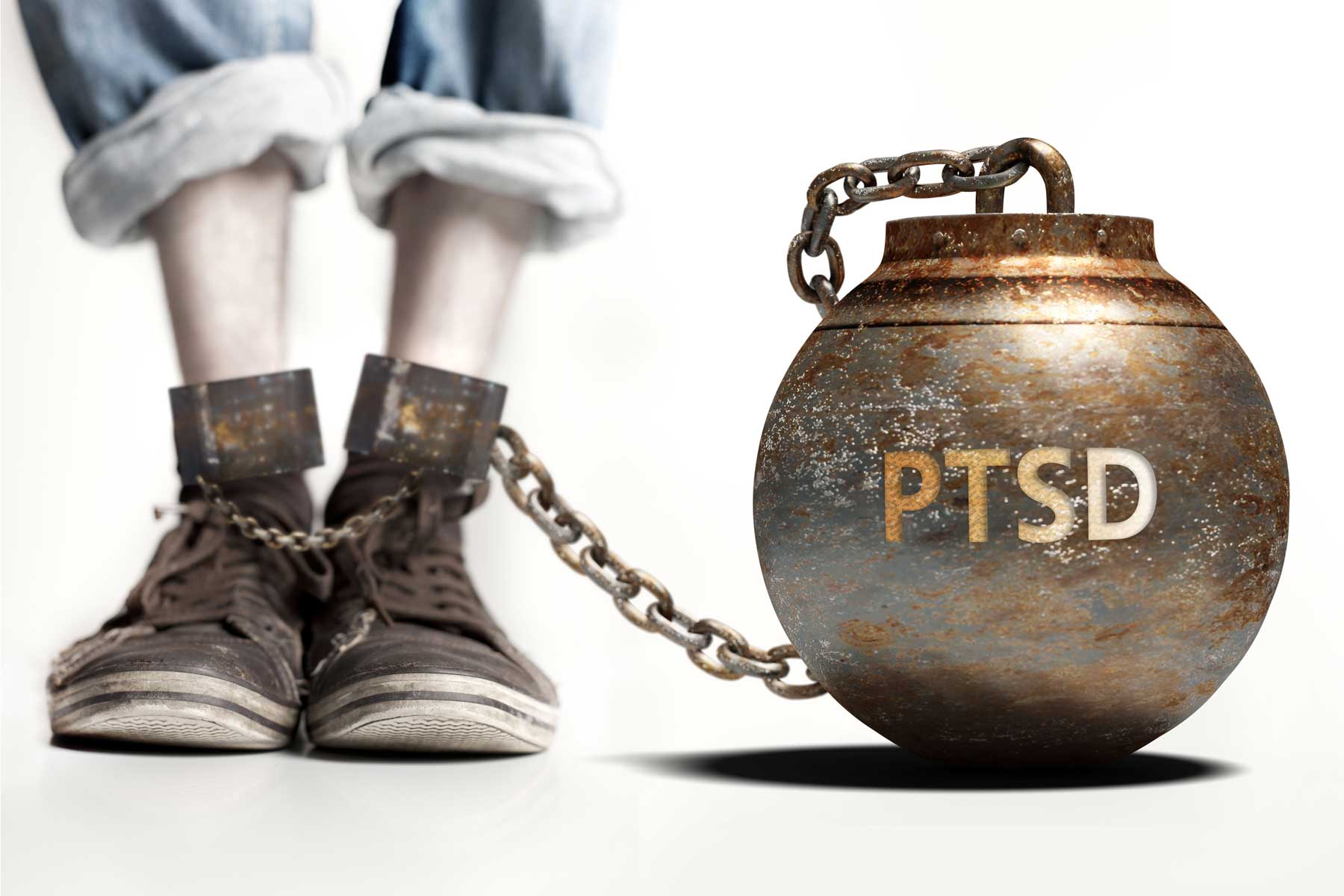
Post Traumatic Stress Disorder (PTSD) Might Be Affecting Your Life
Posttraumatic stress disorder (PTSD) may occur in people who have experienced or witnessed a traumatic event, series of events or set of circumstances. An individual may experience this as emotionally or physically harmful or life-threatening and may affect mental, physical, social, and/or spiritual well-being. Examples include natural disasters, serious accidents, terrorist acts, war/combat, rape/sexual assault, historical trauma, intimate partner violence and bullying.
Mental Healthcare practitioners estimate that 1 in 11 people will be diagnosed with PTSD in their lifetime, and women are twice as likely as men to have PTSD. People with PTSD have intense, disturbing thoughts and feelings related to their experience that last long after the specific trauma has ended. They may relive the event through flashbacks or nightmares; they may feel sadness, fear or anger; and they may feel detached or estranged from other people. People with PTSD may avoid situations or people that remind them of the traumatic event, and they may have strong negative reactions to something as ordinary as a loud noise or an accidental touch.
Diagnosing PTSD requires exposure to a traumatic event, and includes directly experiencing an event, witnessing a traumatic event happening to others, or learning that a traumatic event happened to a close family member or friend. It can also occur as a result of repeated exposure to horrible details of trauma such as police officers exposed to details of child abuse or sexual assault cases.
4 Signs You May Have PTSD.
Intrusion: “I can’t get the images out of my mind”. Intrusive thoughts such as repeated, involuntary memories; distressing dreams;
or flashbacks of the event. Dreams may be so vivid that sufferers feel they are reliving the trauma or seeing it before their
eyes.
Avoidance: “If I don’t think about it, it will go away”. Avoiding reminders of the traumatic event may include avoiding people, places, activities, objects and situations that may trigger distressing memories. People may try to avoid remembering or thinking about the traumatic event. They may resist talking about what happened or how they feel about it.
Alterations in cognition and mood: “It’s all a blur”. Inability to remember important aspects of the traumatic event, negative thoughts and feelings leading to ongoing and distorted beliefs about oneself or others (e.g., “I am bad,” “No one can be trusted”); distorted thoughts about the cause or consequences of the event leading to wrongly blaming self or other; ongoing fear, horror, anger, guilt or shame; much less interest in activities previously enjoyed; feeling detached or estranged from others; or being unable to experience positive emotions (a void of happiness or satisfaction).
Alterations in arousal and reactivity: “I’m just being careful”. Arousal and reactive symptoms may include being irritable and having angry outbursts; behaving recklessly or in a self-destructive way; being overly watchful of one's surroundings in a suspecting way; being easily startled; or having problems concentrating or sleeping.
For a person to be diagnosed with PTSD, symptoms must last for more than a month and must cause significant distress or problems in the individual's daily functioning. Many individuals develop symptoms within three months of the trauma, but symptoms may appear later and often persist for months and sometimes years. PTSD often occurs with other related conditions, such as depression, substance use, memory problems and other physical and mental health problems.
How Do I Get Through This
It is important to note that not everyone who experiences trauma develops PTSD, and not everyone who develops PTSD requires
psychiatric treatment. For some people, symptoms of PTSD subside or disappear over time. Others get better with the help of their
support system (family, friends or clergy). But many people with PTSD need professional treatment to recover from psychological
distress that can be intense and disabling. It is important to remember that trauma may lead to severe distress. That distress is
not the individual’s fault, and PTSD is treatable. The earlier a person gets treatment, the better chance of recovery.
Cognitive Behavioral Therapy
One category of psychotherapy, cognitive behavior therapies (CBT), is very effective. Cognitive processing therapy, prolonged
exposure therapy and stress inoculation therapy (described below) are among the types of CBT used to treat PTSD.
Cognitive Processing Therapy
It focuses on changing painful negative emotions (such as shame, guilt, etc.) and beliefs (such as “I have failed;” “the world is
dangerous”) due to the trauma. Therapists help the person confront such distressing memories and emotions.
Prolonged Exposure Therapy
Uses repeated, detailed imagining of the trauma or progressive exposures to symptom “triggers” in a safe, controlled way to help a
person face and gain control of fear and distress and learn to cope. For example, virtual reality programs have been used to help
war veterans with PTSD re-experience the battlefield in a controlled, therapeutic way.
Trauma Focused Cognitive Behavioral Therapy
This is an evidence-based treatment model for children and adolescents that incorporates trauma-sensitive interventions with
cognitive behavioral, family, and humanistic principles and techniques.
Eye Movement Desensitization and Reprocessing for PTSD
A trauma-focused psychotherapy which is administered over approximately 3 months. This therapy helps a person to reprocess the
memory of the trauma so that it is experienced in a different way. After a thorough history is taken and a treatment plan
developed the therapist guides the patient through questions about the traumatic memory. Eye movements similar to those in REM
sleep is recreated during a session by having the patient watch the therapist’s fingers go back and forth or by watching a light
bar. The eye movements last for a brief time period and then stop. Experiences during a session may include changes in thoughts,
images, and feelings. After repeated sessions the memory tends to change and is experienced in a less negative manner.
Group Therapy
Encourages survivors of similar traumatic events to share their experiences and reactions in a comfortable and non-judgmental
setting. Group members help one another realize that many people would have responded the same way and felt the same emotions.
Family therapy may also help because the behavior and distress of the person with PTSD can affect the entire family. Other
psychotherapies such as interpersonal, supportive and psychodynamic therapies focus on the emotional and interpersonal aspects of
PTSD. These may be helpful for people who do not want to expose themselves to reminders of their traumas.
Medication
Medication can help to control the symptoms of PTSD. In addition, the symptom relief that medication provides allows many people
to participate more effectively in psychotherapy. Some antidepressants such as SSRIs and SNRIs (selective serotonin re-uptake
inhibitors and serotonin-norepinephrine re-uptake inhibitors), are commonly used to treat the core symptoms of PTSD. They are used
either alone or in combination with psychotherapy or other treatments. Other medications may be used to lower anxiety and physical
agitation, or treat the nightmares and sleep problems that trouble many people with PTSD.






